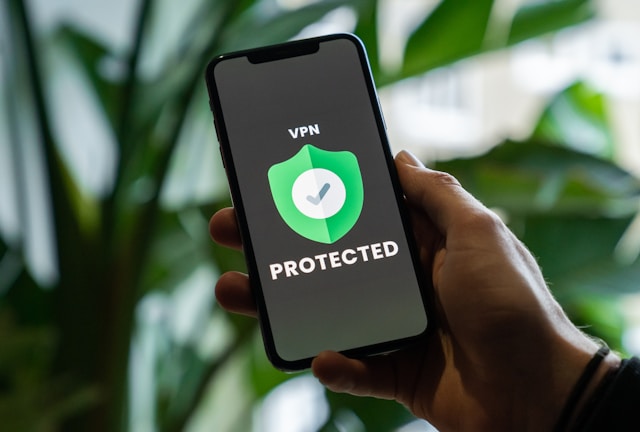Are you interested in using geo-targeted ads to elevate your marketing efforts? It’s an excellent tool when you need to sell products or services in a specific geographic location. You can also save a lot of money by improving the return on investment (ROI) of your marketing campaigns.
We’ll share the top advantages of geo-targeted advertisements to help you decide if they are worthwhile. Furthermore, we’ll provide details of the best practices so that you can hit the ground running.

Table of Contents
What Are Geo Targeted Ads?
Geo-targeted ads, also known as location-based ads, are digital advertisements that target a specific geographic location or region. These ads have a design for reaching users in particular locations. This is possible using their IP address, GPS coordinates, Wi-Fi signals, or the postal codes associated with their devices.
You can implement geo-targeted ads through different advertising platforms. This includes display networks, mobile apps, social media networks, and search engines. You can combine these platforms for the best approach to target users in specific ZIP codes.
Top Advantages of Using Geo-Targeted Ads
Now, let’s focus on some of the top reasons you should use geo-targeted ads to reach potential customers. You’ll see that it’s a marketing strategy that can significantly increase your earning potential. Here are the top benefits of geo-targeted ads:
- Local brand awareness: Geo-targeted ads are an effective way for local businesses to increase brand awareness and visibility within their target market. By reaching users in their local area, you can build customer relationships, establish credibility, and drive foot traffic to your physical locations.
- Increased ROI: You can dramatically increase the ROI of your marketing campaigns with ads that target a geographic location. That’s because you can eliminate many users who are not within your target audience. This is especially relevant when generating foot traffic for a local shop.
- Geofencing capabilities: Geofencing technology allows advertisers to create virtual boundaries around specific locations. This enables advertisers to target users with pinpoint accuracy based on their real-time location. Therefore, you’ll increase the effectiveness of their ad campaigns.
- Relevance: Geo-targeted ads allow advertisers to deliver highly relevant and personalized messages. This provides a better experience for your audience because they receive advertisements of interest.
- Better ad performance: Geo-targeting enables advertisers to optimize their ad campaigns based on location-specific data and insights. Hence, advertisers can refine their targeting strategies by analyzing geographic trends, demographics, and behavior. This ultimately improves advertisement performance to achieve better results.

5 Best Practices for Geo Targeted Mobile Ads
Are you interested in using geo-targeted mobile ads? Then, you’ll need to understand the best practices that can increase your chances of success. In this section, we’ll provide an overview of five strategies you can deploy to start.
1. Understand Your Audience
Before creating geo-targeted mobile ads, thoroughly research and understand your target audience’s demographics, interests, and behavior. You’ll need to use this information to tailor your ad content and targeting parameters to resonate with your audience’s preferences.
You may already have in-depth knowledge of your target audience if you run marketing ads. Utilize this information to create location-based ads that make sense of the type of customers you’re attracting. This ensures that you can maintain a healthy ROI and keep profitability high.
2. Choose Relevant Locations
Identify the geographic locations where your target audience resides, works, or frequents. Then, use this location data and insights to select relevant areas for targeting. This ensures that your ads reach users most likely interested in your products or services.
Furthermore, you can segment your audience based on different geographic locations. Therefore, you can determine which areas or cities lead the most sales. This can help you make more sales from locations with the highest interest in your products.

3. Refine Targeting Parameters
Make sure to constantly adjust the geographic location in which you send mobile ads. Here are some tips for how to refine your targeting parameters for best results:
- Push the boundaries: Expand the boundaries of your targeted area and monitor the effect on your sales figure. You may uncover new areas where many customers are interested in buying your products.
- Gather data: You can gather data to gauge buyer interest levels before spending advertising money in a new area. For example, you can run questionnaires that help you better understand if you have many buyers in unexplored areas.
- Control your budget: When experimenting in new geographic areas, you need to control the amount of money you spend. Ideally, you will test new areas with small amounts of money to achieve proof of concept. Then, you can expand the scope of the marketing efforts once you see some success.

4. Geofencing Technology
Leverage geofencing technology to create virtual boundaries around specific locations. You can then trigger ads when users enter or exit these boundaries. Hence, you can target users with precise accuracy based on their real-time location. You’ll thereby increase the relevance and effectiveness of your ads.
Geofencing technology is the right approach for users who want to create specific boundaries. This level of micromanaging can further boost the ROI of your marketing efforts. Make sure that the third-party software you use offers geofencing tools.
5. Optimize Ad Delivery Times
When scheduling your ad delivery, consider the time and day of the week. Also, use historical data and insights to identify optimal times for reaching users in specific locations. Get this right, and you’ll maximize engagement and conversion rates.
Ideally, you will have software to track the performance of advertisements, which also records the timing of sales. Build a database of information so you can identify what time is optimal for running your ads.

Top Geo Targeting Ads Mistakes To Avoid
Are you worried that you will make mistakes with your geo-targeting ads and lose money in the process? Then, you need to be aware of the top mistakes that can derail your progress. Read on for the top mistakes that you need to avoid:
- Overlooking audience insights: One of the most common mistakes is neglecting to analyze audience insights before setting up geo-targeted ads. That’s because you must understand your target audience’s demographics, behaviors, and preferences. This information allows you to create effective ads that increase your chances of success.
- Using broad location targets: Targeting large geographic areas without narrowing down to specific regions or cities can result in wasted ad spend. That’s because you might be reaching audiences outside of your target market. Instead, use precise location targeting to focus on areas where your target audience is most concentrated.
- Neglecting regional trends: Ignoring regional trends can result in missed opportunities to capitalize on local events, holidays, or cultural moments. Therefore, stay informed about local trends and adjust your ad strategy accordingly. This allows you to maximize relevance and impact.
- Not considering time zone differences: For geo-targeted campaigns spanning multiple time zones, don’t fail to account for time zone differences. Hence, schedule ads based on the local time zone of each targeted location. This ensures maximum visibility and effectiveness.
- Overlooking local competitors: Ignoring local competitors in your targeted locations can hinder your ad campaign’s performance. Conduct competitor analysis to understand their strategies, messaging, and positioning in each market. Then, adjust your approach accordingly to stand out and differentiate your brand.

How To Optimize Budget for Geo Targeting Ads
It’s important to optimize your budget to make the most of geo-targeting ads. Adjust your bids based on geographic performance data to prioritize locations with higher conversion rates. Furthermore, increase bids for high-performing locations and decrease bids for underperforming ones. The idea is to continually improve your advertising ROI to scale your business.
Additionally, Test different bidding strategies, such as manual bidding or automated bidding, to determine which approach yields the best results. You’ll need to monitor performance closely and adjust bidding strategies accordingly to optimize budget allocation.
Finally, Identify high-performing locations where your target audience is most concentrated. Ideally, you will allocate more of your budget to these top-performing locations to maximize results.

Geo Targeted Ads: Are They Worth It?
Yes, geotargeting ads are a great idea if you want to sell products or services to users in specific locations. You can enjoy advantages such as getting more sales, improving marketing ROI, and relevancy.
Now that you understand how to use geo-targeted ads, you can add them to your own marketing campaigns. Make sure that you implement the best practices in this article. Start with one of the strategies that align with your skills and preferences. Once you master a single approach, you can then move on to others to simplify things.
Do you want to take advantage of location-based marketing? Consider using GeoPlugin to increase your conversion rates.
It’s an IP geolocation and reverse IP geocoding technology. It’s about detecting requests from your visitors and locating them in the world, down to their city, based on their IP address. Sign up today to check out GeoPlugin for yourself.












